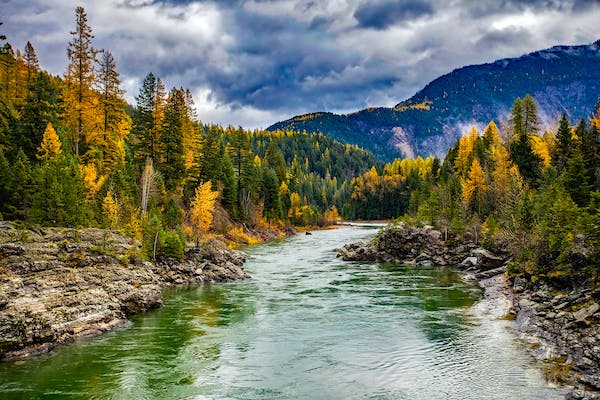Sequoias are among the world’s hardiest trees and have bark so thick that they can be resistant to flames. They’re also known as the third longest-living tree species. These marvelous and towering trees are rooted in the Redwood Canyon, the world’s largest grove of Sequoias.
The Redwood Canyon is found in the Kings Canyon National Park, located in the Fresno and Tulare counties in California, United States of America. The Kings Canyon National Park is not only the home to these trees but also has its country’s deepest canyon. The maximum depth reaches 8200 feet, making it much deeper than the famous Arizona Grand Canyon.
The Kings Canyon National Park presents travelers with an astonishing view of the landscapes, deep valleys, and exciting and unique rock outcroppings. It is divided into another set of areas called the Grant Grove and Cedar Grove. The former, located in the western portion of the Park, has been branded by many as the home to the General Grant Tree, known as the country’s Christmas Tree. On the other hand, the Cedar Grove is found at the bottom of Kings Canyon and is often compared to the Yosemite Valley. When the visitors have taken so much of rock formations’ beauty, they can take a break by viewing another form of nature in the Zumwalt Meadow. It is in this part of the Park that the Kings River meets the verdant meadows.
The Park was initially established during the 1890s and was then called the General Grant National Park. By the signing of former President Benjamin Harrison, America’s second national Park was established. The Sequoia National Park was created to protect these giants from illegal logging.
On March 4th of 1940, it was renamed to Kings Canyon National Park. The name was derived from the Kings Canyon, which is a rugged glacier-carved valley. From then on, it is said that over 1.5 million people were allowed to be marveled by the nature of this Park.
Visitors often busy themselves with the National Park’s many attractions and activities, from hiking trails to camping to horseback riding and fishing. The magnificent, towering Giant Redwoods and Giant Sequoias are the stars of the show, along with the General Grant Tree, the world’s second-largest tree. More can be learned about the Park’s trees in the Museum.
The John Muir Trail, which extends to about 211 miles, gives nature enthusiasts a hike from Yosemite to Mt. Whitney. But apart from hiking, there are Astronomy Programs offered for stargazers and those who simply have the knack for admiring the celestial bodies.
Kings Canyon National Park is home to more than 300 different animal species, such as the Black Bears, Coyotes, Sheep, Badgers, Deer, Opossums, Wolverines, Muskrats, Beavers, Frogs, Mountain Lions, Foxes, Birds, Turtles, Fish, and Snakes. With binoculars, on the one hand, a camera on the other, and a backpack full of necessities for hiking, people can take a nature walk or day hike to catch a glimpse of these critters. One can learn more about the Black Bears at the Lodgepole Visitor Center, which presents a 22-minute film about these creatures, alongside exhibiting more about the Park’s history, wildlife, and American Indian Inhabitants.
Adventures in the Park will most certainly not be halted during the Winter Season, as they offer many options for their visitors. In fact, visiting the Park in this period gives travelers a fresh outlook of the Park, as it is blanketed in snow, and warmed with the Yuletide mood. It’s as if the Park has been magically transformed into a Winter Wonderland!
Sledding, Snowshoeing, Cross-country trails, and many Skiing are options gifted to these visitors. The fireplace of Great Room Lobby in the John Muir Lodge sets the mood and warms families’ hearts during the chilling, cool season.
Facts about Kings Canyon National Park include the fascinating truth that Fire and proactive forest management play an essential role in the Park. The heat produced from low-intensity fires make Sequoia cones open and drop their seeds. This Park was then one of the first to make use of this process for the sustainability, long-term survival, and rejuvenation of these trees.
Another thing to know is that more than 95% of the Park is for identified and managed as wilderness, to protect the area and preserve the nature and environment of those locations so as not to compromise the quality of living of both animals, and plants.
It has been mentioned earlier that the park houses over 300 animals, but it should also be noted that about 1,200 species of vascular plants grow on its surface. Many variations of pine exist in this Park.
Although it seems to be now deemed as a tourist spot, and a tourist’s delight during the four seasons, it is to be remembered that the Kings Canyon National Park is an ecosystem that balances many factors and home to several animals and plants.

